Windchill (OSLC) Context
In OSLC Connect for Windchill 3.15 we introduced the concept of Windchill Contexts. We have become more consistent with native Windchill behavior. As well the Context is more expressive than our unique filters.
The role a Windchill Context plays in the ALM-PLM bridge in OSLC is to identify the OSLC Component Configuration for a Windchill Product/Library. This is the rule that OSLC will follow when determining the artifacts (and their corresponding versions) used in a configuration.
Referencing a Windchill Context in a GCM
This Windchill Context is used in a Global Configuration to identify the in-scope and versions of assets in a configuration. You will observe this in the GCM selection dialog.
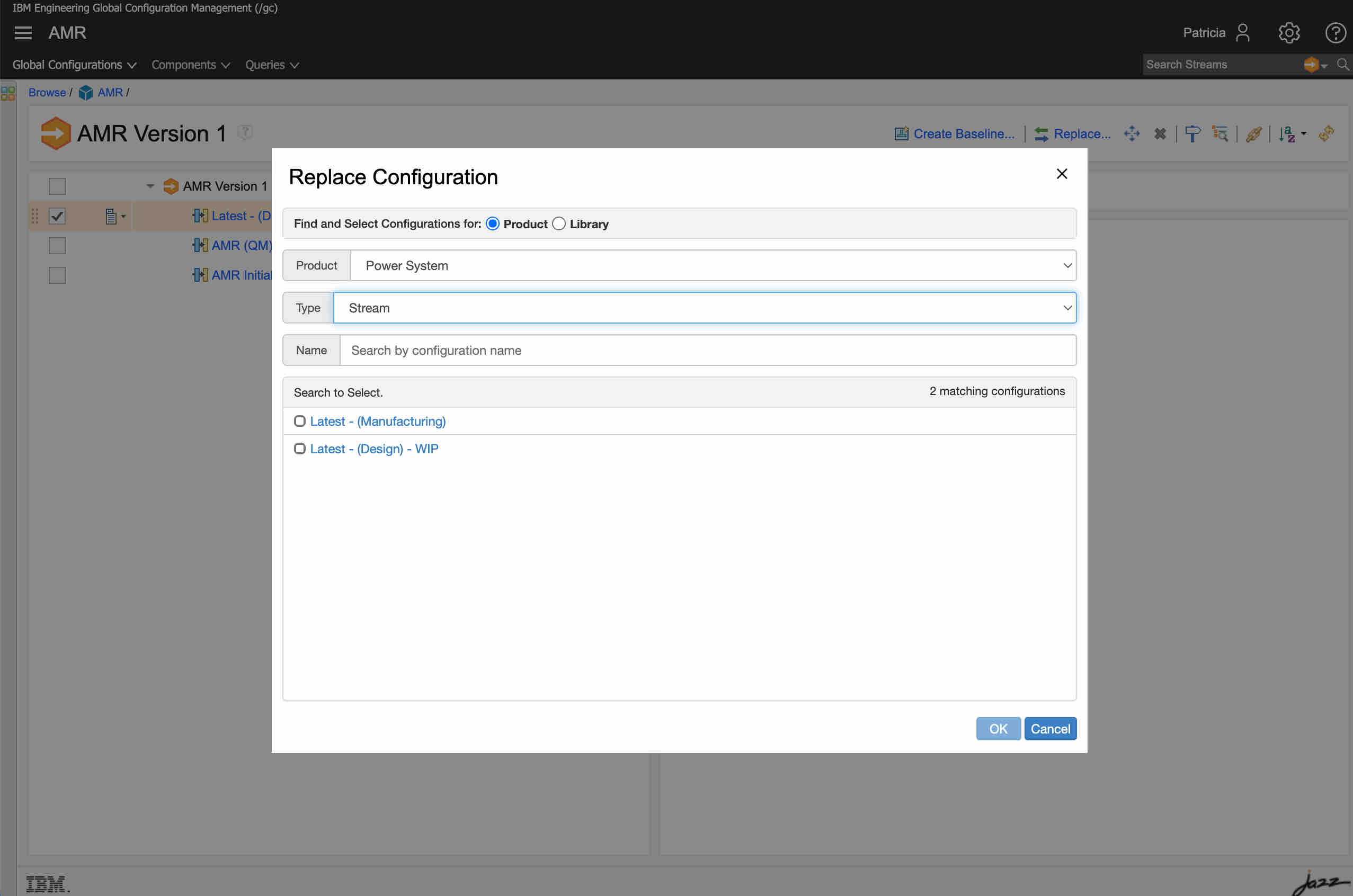
In this dialog, you can observe the available configurations to select from your Product. They are grouped as Streams or Baselines. In the ALM/OSLC parlance, Streams are mutable/dynamic entities, while Baselines are immutable/static configurations.
This works exactly. the same as the inclusion of DNG Streams or Baselines that all links in that Global Configuration will use that destination configuration to navigate. If you want to link to Windchill Parts, you must have a Windchill Configuation for your Product/Library selected.
How is a Windchill Context defined
A Windchill Context is defined in the Product Details → OSLC definition. A Context is a selection rule that the Product Owner is creating for external reference for the larger Global Configuration.
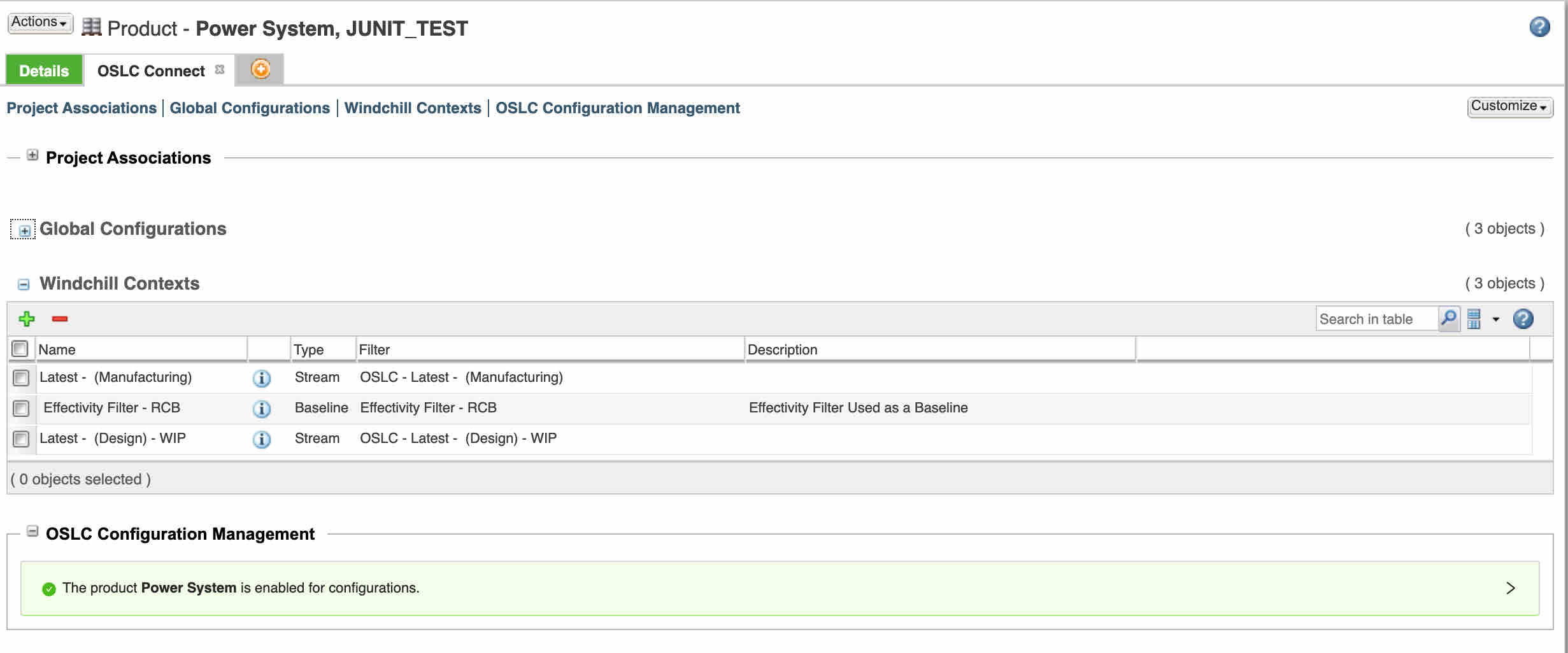
Creating a specific context is simple. It only requires the selection of a Windchill Filter, Assignment of Stream/Baseline status, and a Description.
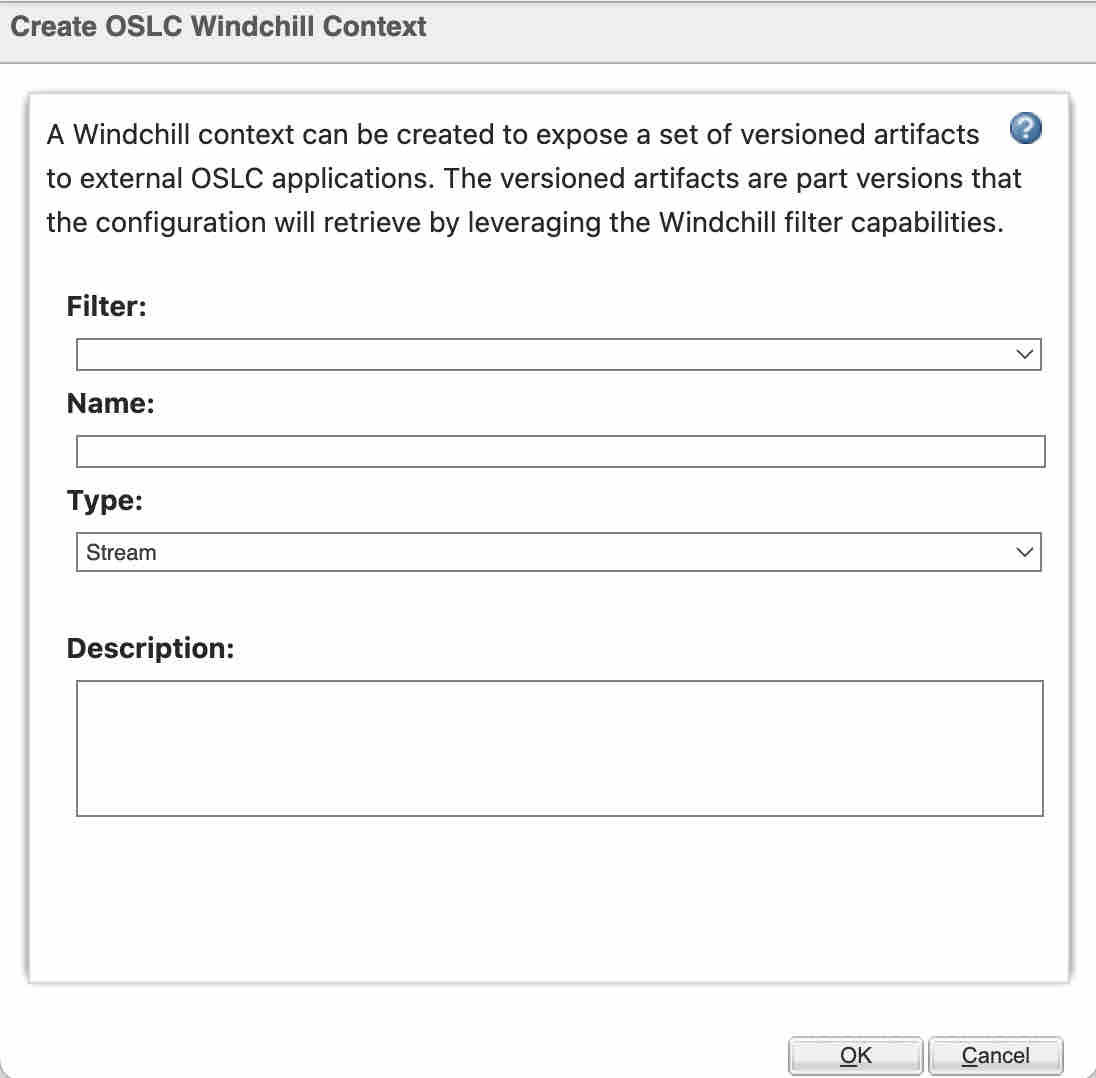
Once defined, it can be selected and used by a Global Configuration in GCM.
Deleting a Windchill Context does not delete the filter. As well as the same context can switch what filter it is using.
Note, a filter must be both previously defined and public to be used as a Windchill Context.
Notes on Filters
Filters should be defined for your Windchill Contexts. We utilize this native feature to better align with Windchill usage and provide greater flexibility.
Filters allow us to define a prioritized set of rules
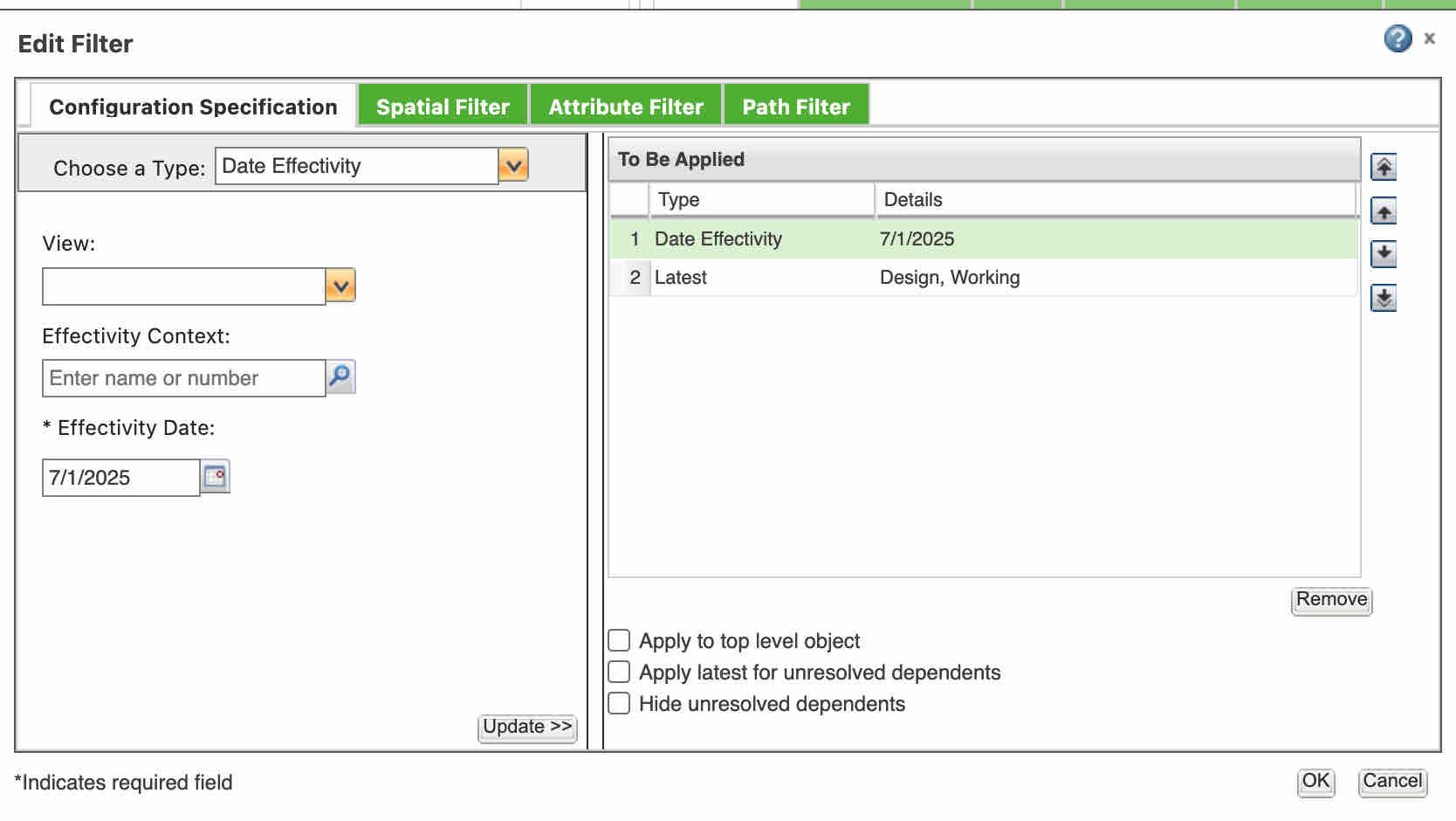
Users can used “Latest” selection rules for Streams. If a static selection is desired, effectivity rules (or Baselines) can be used to select a static set of artifacts.
Each organization can set the rules that are applied.
Using Windchill Contexts in a GCM Baseline
To use a Windchill Context in a GCM Baseline, a Windchill Context must first be a Baseline. For example:

In this GC, the Windchill Configuration Context is a Baseline. This means that when we initiate a GC Baseline the process can continue by using the existing Windchill Configuration (that already is a baseline).
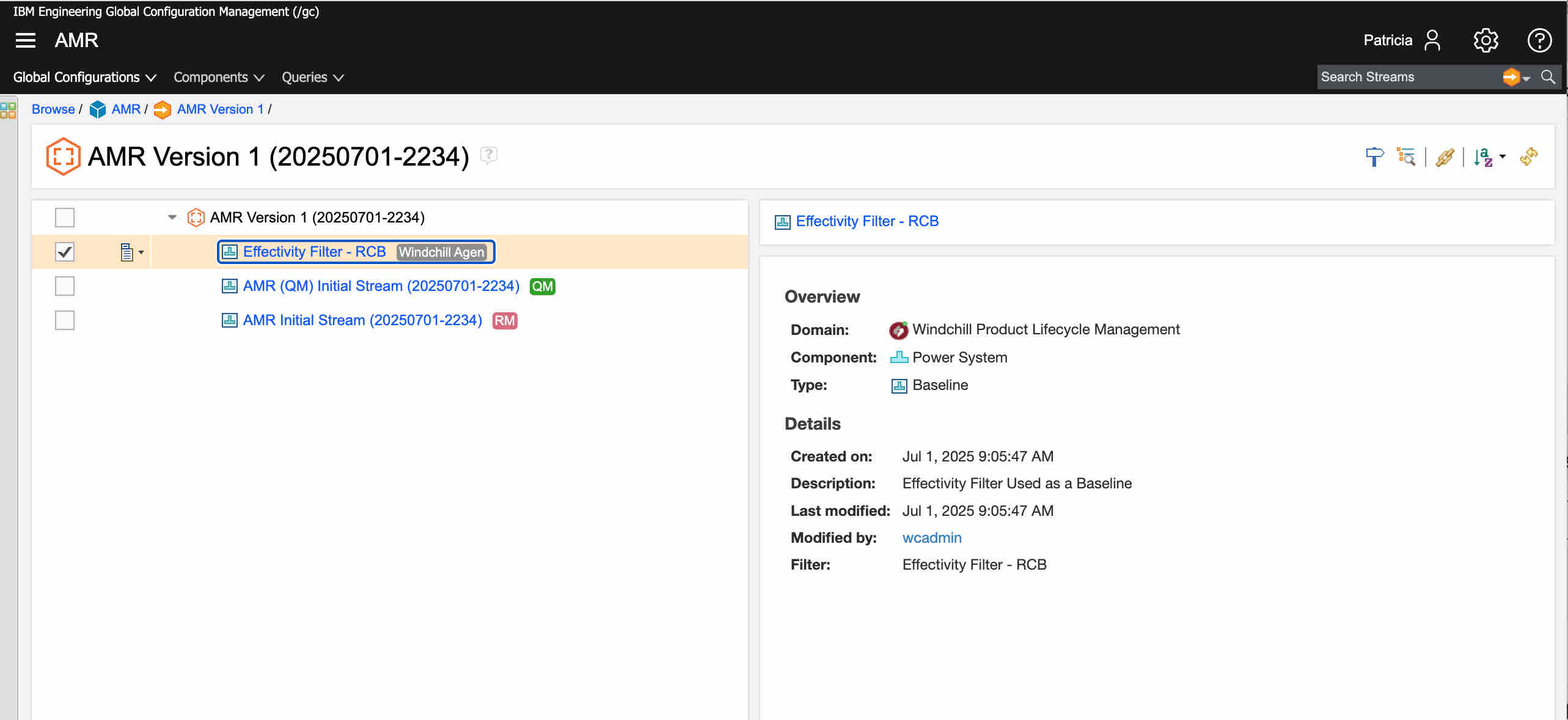
We are leaving it to the Organization to create the process to accurately create and freeze the static filters from Windchill. (We may consider in a future instance of the product how we would generate a static filter from the existing stream filter, but this is a roadmap item).
